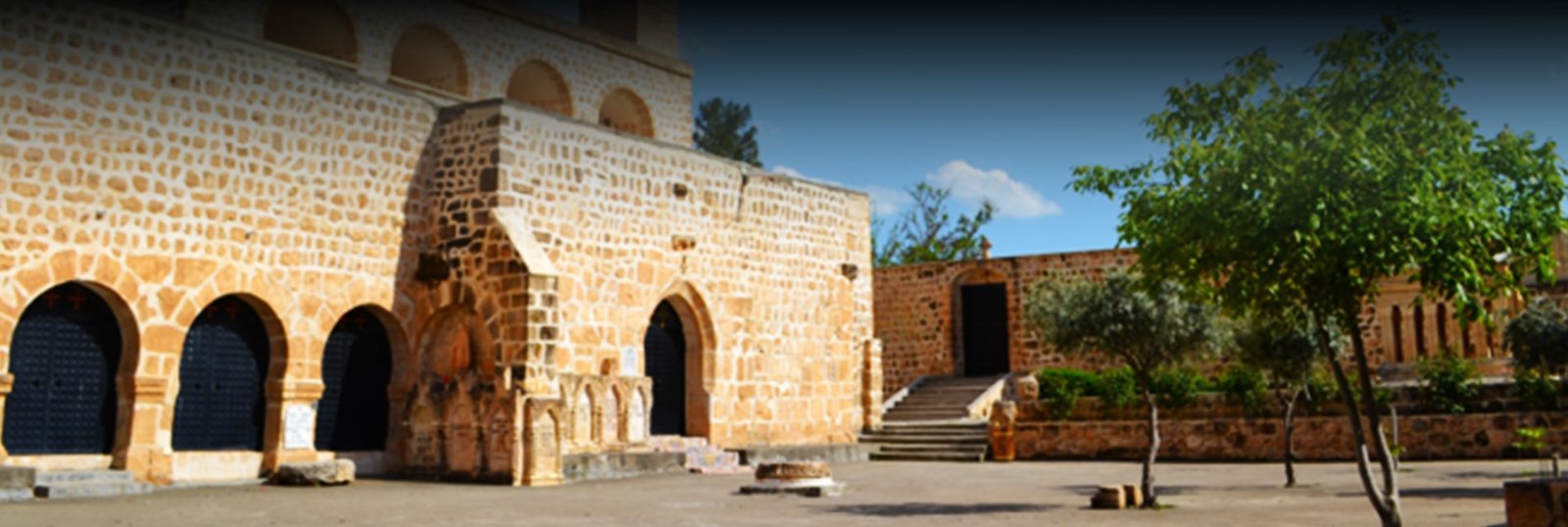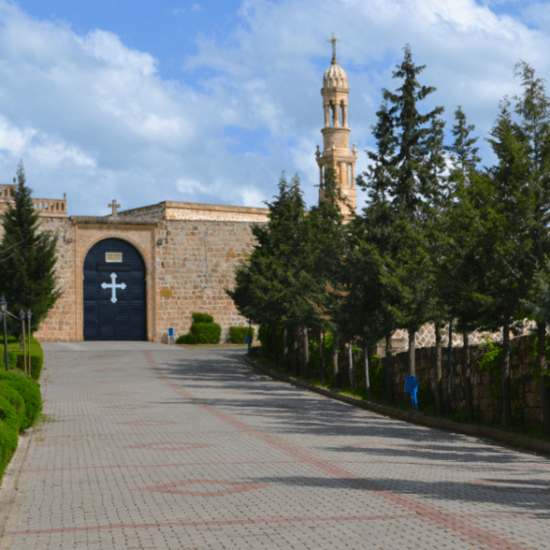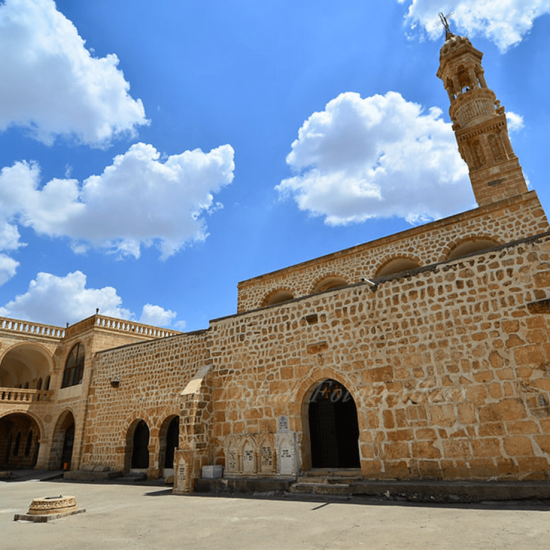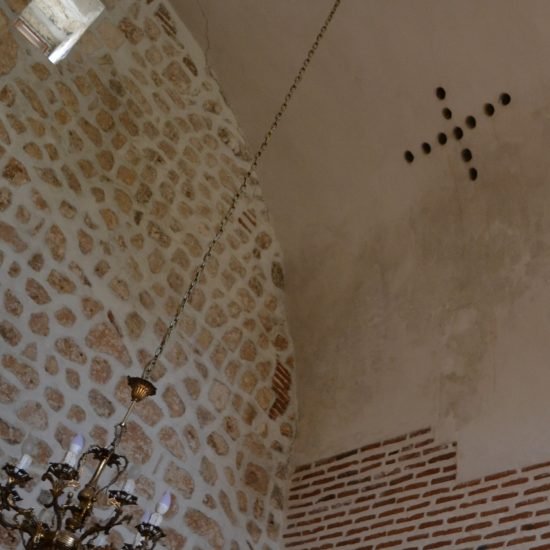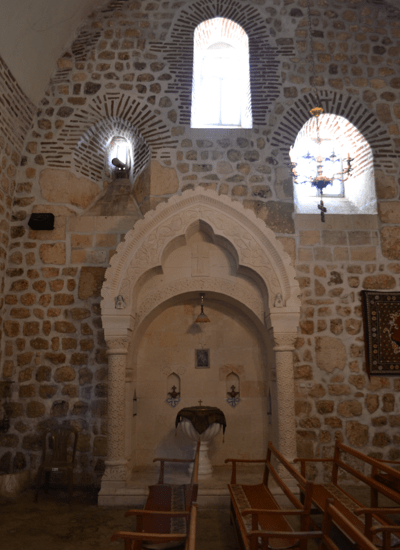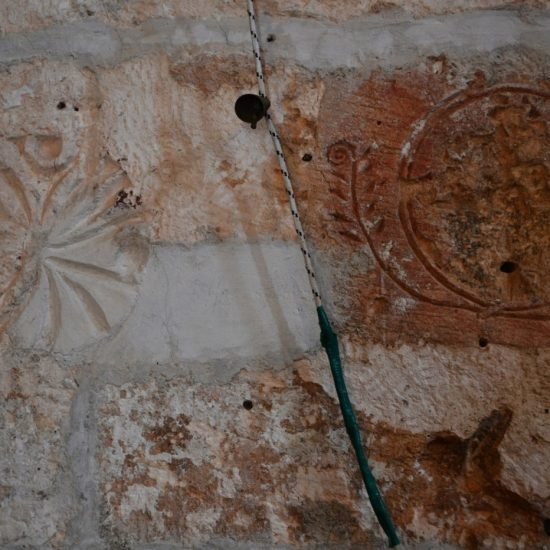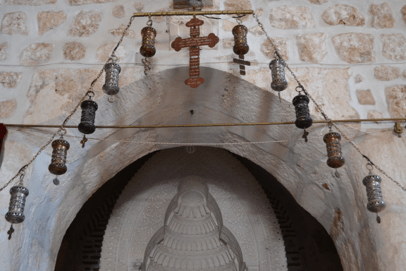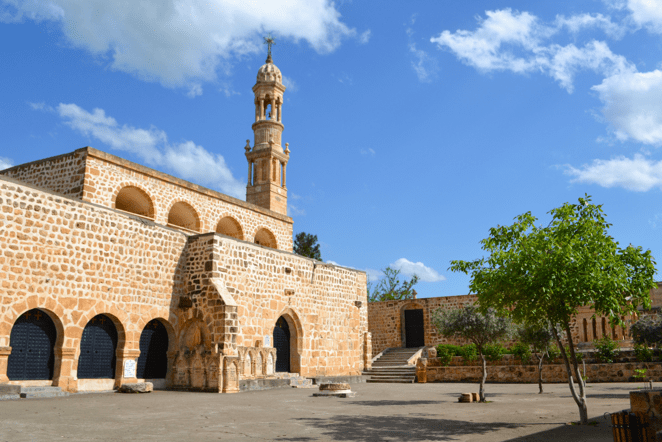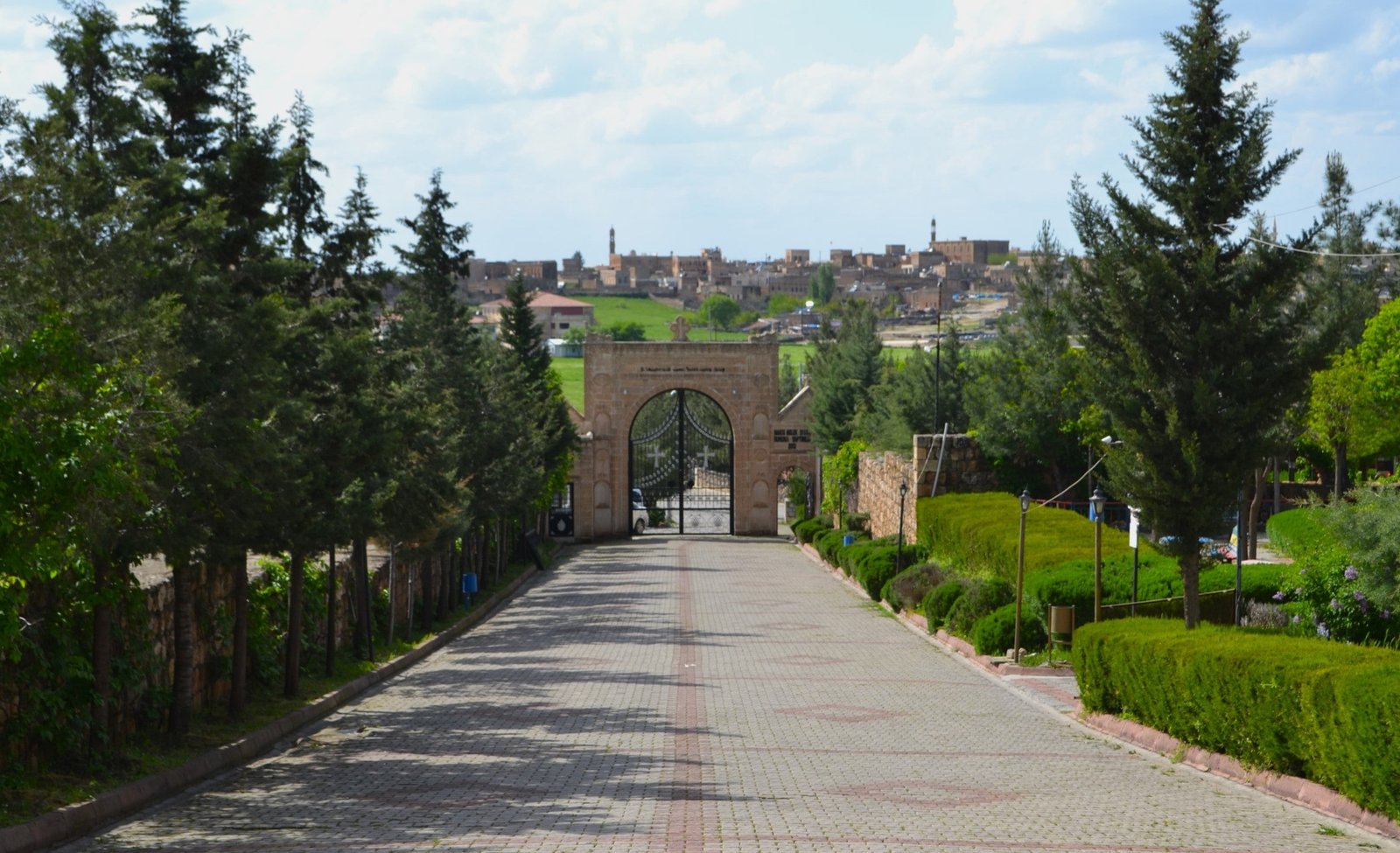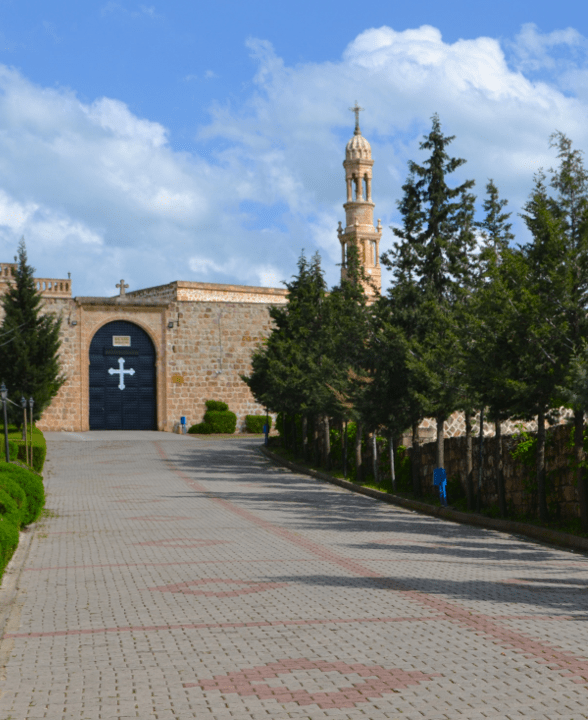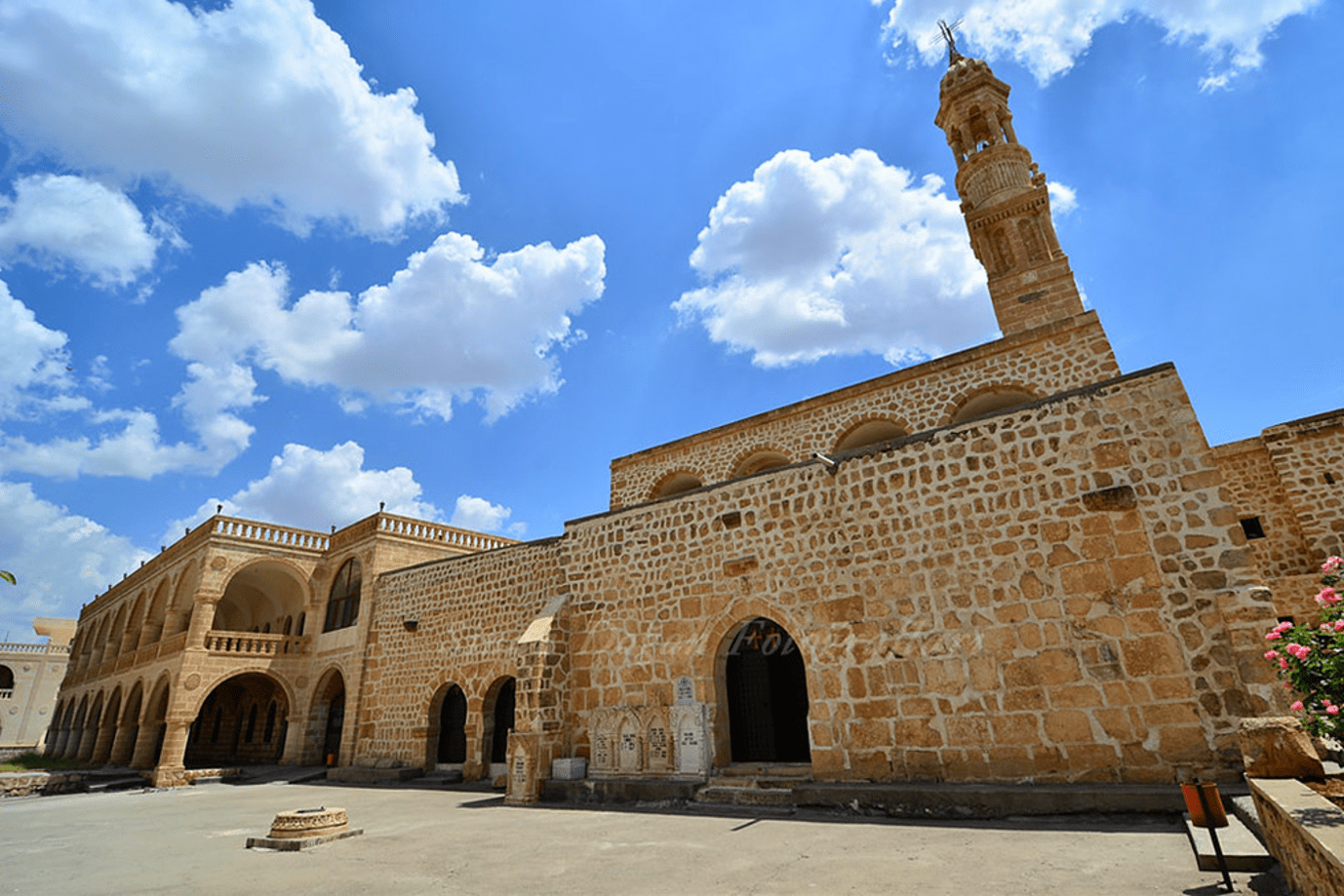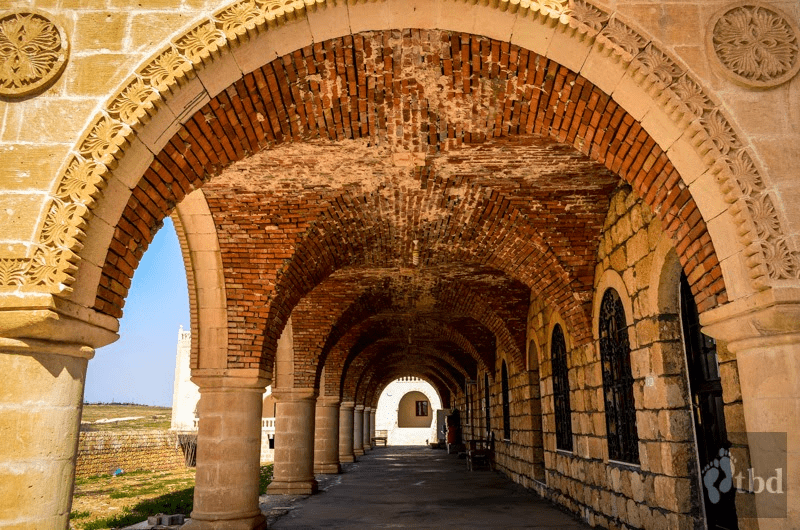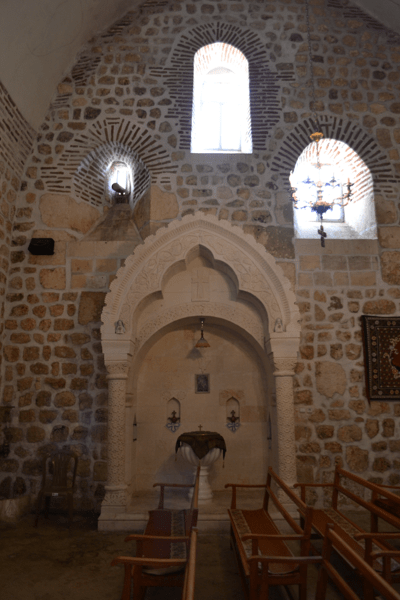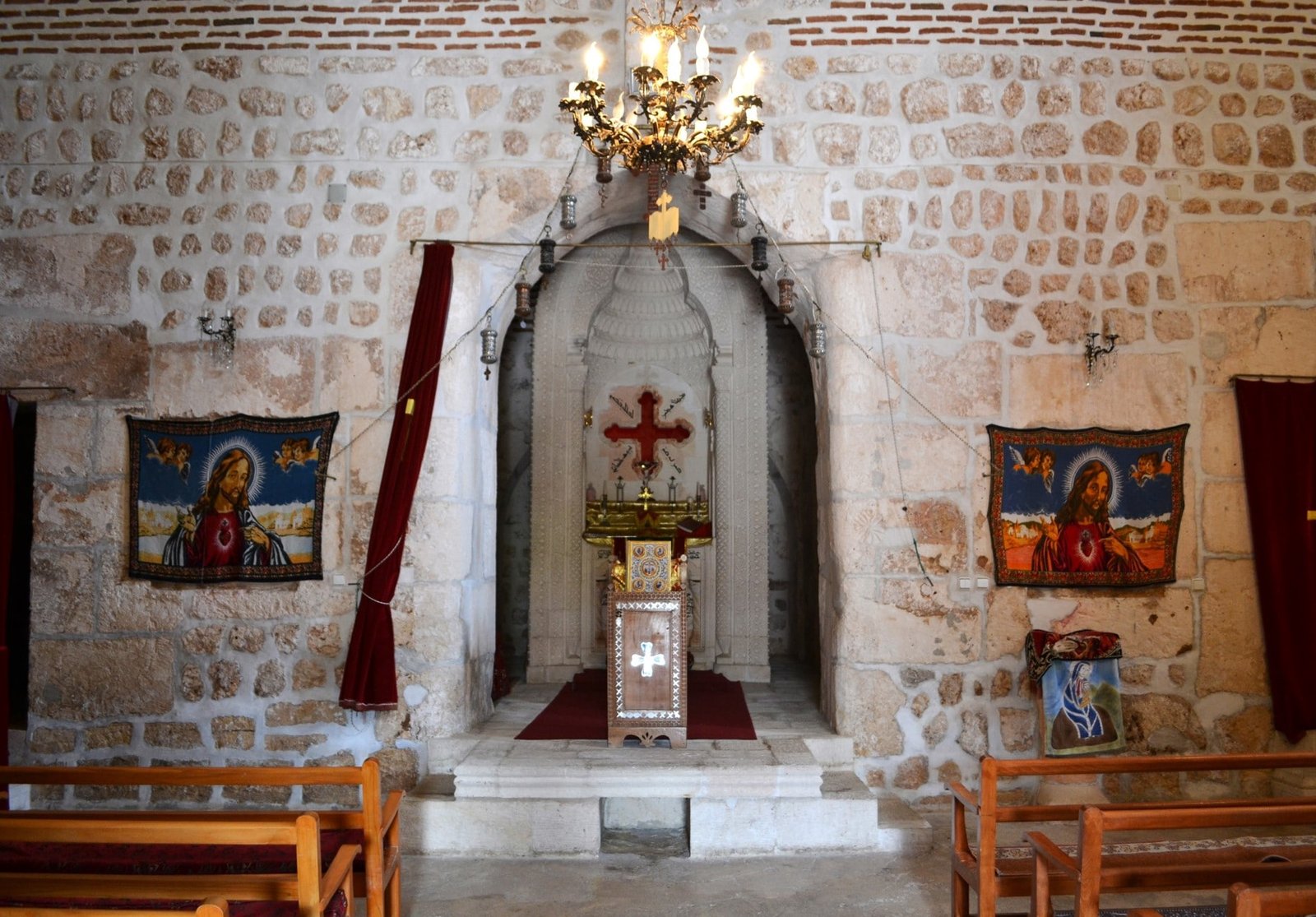The Monastery of Mor Abrohom and Mor Hobel
per person
The Monastery of Mor Abrohom and Mor Hobel lies on a hill about one kilometre East of the city of Midyat. The monastic establishment is enclosed by tough modern walls and it includes three churches, two of which dates before the Arab conquest. According to the local tradition, it was founded in the fifth century as a daughter house of the major monastery of Mor Gabriel by two monks, Abrohom and Hobel. Abraham in question is the fourth-century miracle-worker of the Highest Mountain (in the Ṭūr ‘Abdīn), the master of M. Barsawmo, the Chief of the Mourners. Hobel was a pillar saint (stylite) who lived in the time of Philoxenos of Mabbugh, whom he was able to embrace by making his pillar bend down. Another tradition affirms that its monastic church was among those built by the emperor Anastasius in the Ṭūr ‘Abdīn (Keser Kayaalp, Elif. Church Architecture of Late Antique Northern Mesopotamia. Oxford Studies in Byzantium. Oxford, New York: Oxford University Press, 2021: 209).
In the year 1165 CE, one of Mor Abrohom and Mor Hobēl’s monks, Yesu, who was also a distinguished writer from the Ṭūr ‘Abdīn, left a beautiful mark in the Syriac literature as a priest of the monastery. There are further evidences of the monastery being an active and vibrant community in the 15th century, when twenty monks lived there under the monk Behnam, and throughout its history it brought three bishop to the Syriac Church. Unfortunately, not much is known of its subsequent historical vicissitudes, while most of the original structure is gone and there is no trace of Mor Hobel’s stylite column. The monastic complex, as it is visible today, in fact, is the result of an extensive restoration that took place in the late nineteenth century (Hans Hollerweger et al., Lebendiges Kulturerbe : Turabdin : Wo Die Sprache Jesu Gesprochen Wird. Freunde des Tur Abdin, 1999: 108-9). Worthy of note is the collection of rare liturgical manuscripts still preserved at the monastery, and many of which – in Arabic, Syriac and Arabic Garshuni – have been recently digitized by Hill Museum & Manuscript Library and Centre Numérique des Manuscrits Orientaux (https://hmml.org/collections/repositories/turkey/mor-abrohom-monastery/).
FORMAL ANALYSIS
Mor Abrohom, the main monastic church, has a roomy transversal-nave and it probably dates back to an early period, as its building technique with monumental stone blocks may suggest (Keser Kayaalp, 2021: 204). The above-mentioned tradition on its Anastasian attribution, might indeed support this dating hypothesis.
North of Mor Abrohom church is Mor Hobēl one, a smaller transverse-hall-type church (Bell, Gertrude, and Marlia Mundell Mango. The Churches and Monasteries of the Tur’ Abdin. London: The Pindar Press, 1982: figs 23, 36). A little domed Church of the Mother of God is located South of the other two.
To the North of the monastic complex is a cemetery with tombstones made of marble for wealthy families, where the bishop of Tur ‘Abdin always makes an appearance on Easter Monday, when it is the custom to eat on the graves of the dead.
In the 20th century, a bell tower was added to the structure, an architectural element that during the last century has become a distinctive feature of the Ṭūr ‘Abdīn hilly region.
- THE MONASTERY OF MOR ABROHOM AND MOR HOBEL © PHOT. VIRGINIA SOMMELLA, 2019
- MOR ABROHOM AND MOR HOBEL’S EXTERNAL GATE. VIEW FROM THE MONASTERY (E) TOWARD THE CITY OF MIDYAT (W) © PHOT. VIRGINIA SOMMELLA, 2019
- MOR ABROHOM AND MOR HOBEL’S INTERNAL GATE. VIEW FROM THE EXTERNAL GATE (W) TOWARD THE MONASTERY (E) © PHOT. VIRGINIA SOMMELLA, 2019
- VIEW OF THE MONASTIC COMPLEX FROM THE SOUTH: MOR ABROHOM MAIN CHURCH AND MOR HOBEL CHURCH IN FOREGROUND, BOTH RESULT OF A RECENT RESTORATION; RECENTLY BUILT GUESTHOUSE FOR PILGRIMS AND FAITHFUL AT THE BOTTOM © PHOT. SINAN DOGAN, https://www.flickr.com/ photos/sinandogan/18929968903
- WESTERN PORCH ON THE MAIN FAÇADE OF THE MONASTIC COMPLEX © PHOT. http://travelingbydefault.blogspot.com/2013/05/mor-abraham-and-mor-hobel-monastery.html
- MOR ABROHOM BARREL VAULT. DURING THE RESTORATION WORK, FEW ROWS OF BRICK HAVE BEEN PRESERVED IN THE INTRADO’ LOWER SECTION, PROBABLY AS A WITNESS TO THE ORIGINAL VAULT © PHOT. VIRGINIA SOMMELLA, 2019
- MOR ABROHOM , THREE WINDOWS ON THE SOUTH WALL AND HOLY WATER FONT © PHOT. VIRGINIA SOMMELLA, 2019
- DETAIL OF STONE CARVINGS AND DRAWINGS ON MORTAR, TO THE RIGHT OF MOR ABROHOM ALTAR © PHOT. VIRGINIA SOMMELLA, 2019
- DETAIL OF LANTERN SUSPENDED OVER MOR ABROHOM ALTAR © PHOT. VIRGINIA SOMMELLA, 2019
- ALTAR AND SANCTUARY IN MOR ABROHOM MONASTIC CHURCH © PHOT. VIRGINIA SOMMELLA, 2019
Tour Location
The Monastery of Mor Abrohom and Mor Hobel
| Other monuments and places to visit | (1) Church of Mor Shmuni in Midyat; (2) Church of Mor Barsawmo in Midyat; (3) Church of Mor Akhsnoyo in Midyat; (4) Church of Mor Sharbel in Midyat; (5) Protestant Church in Midyat; (6) Monastery of Mor Gabriel, 22 km S-E of Midyat. |
| Natural Heritage | Gently undulating lanscape strewn with fields and vineyards (Hollerweger, 1999: 94). |
| Historical Recreations | |
| Festivals of Tourist Interest | Every Easter Monday the Archbishop celebrates a service for the faithful departed in the Church of Mor Abrohom. There follows a procession to the cemetery and the blessing of the tombs. The idea is that the hope of Easter extends beyond the grave. Besides, the faithful bring cakes and eggs and offer them around (women are mainly responsible for this), recalling the Feast of the Dead in early Christian times (Hollerweger, 1999: 111). |
| Fairs | |
| Tourist Office | |
| Specialized Guides | |
| Guided visits | |
| Accommodations | Only pilgrims or Syriac Christian are generally allowed in the guest room. Hotel or bed and breakfast in the cities of Midyat (15/30min on foot), Nusaybin (56min by car), or Mardin (1h 15min by car). |
| Restaurants | Restaurants in the city of Midyat (15/30min on foot). |
| Craft | |
| Bibliography | T. A. Sinclair, Eastern Turkey: An Architectural and Archaeological Survey., 4 vols (Pindar Press, 1987). Andrew Palmer, Monk and Mason on the Tigris Frontier: The Early History of Tur `Abdin (Cambridge England ; New York: Cambridge University Press, 1990). Hans Hollerweger et al., Lebendiges Kulturerbe : Turabdin : Wo Die Sprache Jesu Gesprochen Wird (Freunde des Tur Abdin, 1999). Elif Keser Kayaalp, Church Architecture of Late Antique Northern Mesopotamia, Oxford Studies in Byzantium (Oxford, New York: Oxford University Press, 2021). Keser Kayaalp, Elif, ed. Syriac Architectural Heritage at Risk in TurʿAbdin. Istanbul: KMKD, 2022. |
| Videos | |
| Website |
| Monument or place to visit | Monastery of Mor Abrohom and Mor Hobēl. |
| Style | Remains of Late Antique local masonry structures, medieval and modern addictions. |
| Type | Fortified monastic complex. |
| Epoch | 5th century – present. |
| State of conservation | Good conditions. |
| Degree of legal protection | |
| Mailing address | Akçakaya, 47500 Midyat/Mardin, TR. |
| Coordinates GPS | 37°24'44.90N 41°23'7.58E |
| Property, dependency | |
| Possibility of visits by the general public or only specialists | Accessible to general public, with few inaccessible private areas. |
| Conservation needs | |
| Visiting hours and conditions | |
| Ticket amount | |
| Research work in progress | Extensive restorations in the past century. |
| Accessibility | Accessible by car and by walking from Midyat (15min on foot), from Nusaybin (56min by car) and from Mardin (1h 15min by car). |
| Signaling if it is registered on the route | Not yet registered. |
| Bibliography | Bell, Gertrude, and Marlia Mundell Mango. The Churches and Monasteries of the Tur’Abdin. London: The Pindar Press, 1982. Hans Hollerweger et al., Lebendiges Kulturerbe : Turabdin : Wo Die Sprache Jesu Gesprochen Wird (Freunde des Tur Abdin, 1999), 108-111. Palmer, Andrew. ‘La Montagne Aux LXX Monastères. La Géographie Monastique Du Tur ’Abdin’. In Le Monachisme Syriaque, 169–259. Études Syriaques 7. Paris: Librairie orientaliste Paul Geuthner, 2010: 34. Keser Kayaalp, Elif. Church Architecture of Late Antique Northern Mesopotamia. Oxford Studies in Byzantium. Oxford, New York: Oxford University Press, 2021. |
| Videos | |
| Information websites | mardin.ktb.gov.tr wikipedia.org mapcarta.com |
| Location | Located in a S-E part of the Anatolian Plateau, on a hill 1 kilometer east of the city of Midyat (Mardin, Turkey). |


